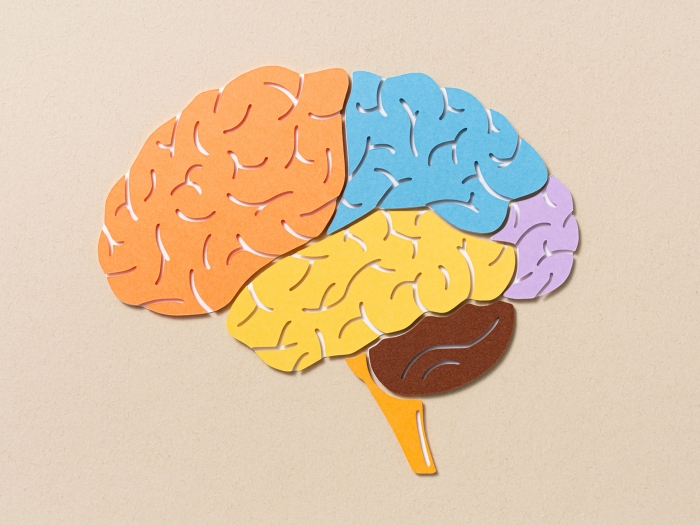Clinical trials are exploring how to treat people for dementia before symptoms strike. People are desperate to prevent it, but what does the science say?
4:22 PM
Author |

Alzheimer's disease is one of the most dreaded diagnoses, partly because there is no effective medication to stop it or slow it down. But new efforts to find treatments to stave off dementia before any symptoms appear raise important questions about potential overtreatment, two Michigan Medicine experts say.
Kenneth Langa, M.D., Ph.D., and James Burke, M.D., wrote a Viewpoint in a recent edition of JAMA Internal Medicine about the potential for overdiagnosis and high costs if treatment for preclinical Alzheimer's disease becomes widely used. Langa was also a co-author on a recent JAMA paper that addressed preventing dementia. Langa and his colleagues found that people with a healthier lifestyle had a lower risk for dementia in later life, even if they had genes that put them at high genetic risk.
Langa, the Cyrus Sturgis Professor of internal medicine, and Burke, an associate professor of neurology, discuss their main concerns and messages for patients.
What is preclinical Alzheimer's disease and how is it treated?
Burke: It's frankly an evolving concept, led by the idea that maybe we're treating Alzheimer's disease too late. In many people, you can detect amyloid, the abnormal protein thought to be a cause for Alzheimer's, in the brain through imaging years or even decades before the development of cognitive symptoms. The idea is that it might be possible to change the disease course when these proteins are first detected so that the person never develops dementia.
There are no treatments available in clinical practice. A variety of agents have been trialed up to this point, but we don't have evidence for effectiveness as of yet. Most of the focus has been on the amyloid pathways, to reduce deposition of potentially toxic forms of amyloid in the brain.
Langa: The concept seems to make common sense. If we can find ways to intervene early on in the disease process, before it has progressed to where people start losing their memories or having other thinking problems, it seems that should increase the chances for success. However, the brain is complicated, and it's possible we could also do harm by treating some people who have amyloid, but don't currently have any symptoms.
How could detection and treatment of preclinical Alzheimer's disease be implemented broadly?
Burke: Assuming we had an effective treatment, delivering that treatment to the whole population would require an enormous amount of work to identify the right processes to deliver care. Even if we had an effective treatment, implementation is going to be tricky.
For example: who should be screened? Who should be treated? How could we identify a false positive? How are we going to pay for it?
What is overdiagnosis? Why could the notion of overdiagnosis be important for a patient with preclinical Alzheimer's disease?
Langa: Overdiagnosis is when you use a test in a person who is not having any symptoms and find a lab or imaging abnormality, but it's possible that the abnormality that you have found won't go on to cause any noticeable symptoms or health problems during the person's life. In other words, the lab test has diagnosed something that would never have been a significant health issue for the person if you hadn't done the test.
Burke: Anytime you take any diagnostic test and apply it to a population, you get some false positives. Someone with a positive PET scan for amyloid and a diagnosis of preclinical Alzheimer's disease may or may not go on to have Alzheimer's disease. But, if they weren't going to develop Alzheimer's disease, they get a very scary diagnosis and a potentially risky treatment.
It's a particularly tricky problem because Alzheimer's is a disease of older adults. A substantial number of patients may die before developing Alzheimer's, so these folks would instead receive only the downsides of a preclinical Alzheimer's diagnosis, such as fear, stigma, and the potential harms of treatment.
Why do you believe the health care system will be challenged to afford treatment of preclinical Alzheimer's disease?
Burke: The cost lies within a combination of factors, starting with the scope of the problem. Based on best guesses about the proportion of the population with evidence of amyloid in the brain, we're talking about tens of millions of people. To find those tens of millions of people, providers would need to conduct scans of up to hundreds of millions of aging people. That's a substantial cost in itself.
In addition, the cost of the actual medications will likely be exorbitant. The medications that are currently in trials are similar to cholesterol medications that cost tens of thousands of dollars per year. When you multiply the huge target population by the substantial cost of the medication, and then consider that someone could use these treatments for a long duration, the cost becomes staggering. Such broad implementation of a costly drug gets to the range of percentage points of the GDP of the United States. It would likely be more expensive than any other treatment in the U.S., if rolled out broadly.
Now, of course, that would entirely depend on how we actually implement these processes. If some risk stratification is incorporated that decreases the number of people who will be screened, costs could be reduced a great deal. If the price of drugs were heavily negotiated, that would significantly reduce costs. But, our current practice for other medications is to neither target them narrowly nor negotiate their prices aggressively.
What should people do today who are interested in preventing Alzheimer's disease?
Langa: My shorthand advice to my patients is that they should "Walk, Talk and Read." By that I'm encouraging them to do things that have been shown in a number of studies to be associated with a lower risk for dementia, including staying physically active, staying connected to a social network of family and friends and keeping their minds and brains active through reading or other cognitive activities. I think there is also growing evidence that it is important to keep your blood pressure and other cardiovascular risks under good control.
Our recent study of nearly 200,000 people in the United Kingdom showed that key lifestyle factors, such as better diet, more physical activity, not smoking and moderate alcohol intake, were associated with a significantly lower risk for dementia, even among individuals who had a high genetic risk.
However, it's important for physicians to let people know that there are no guarantees; you can do everything "right" and still get dementia. This is a complicated disease likely caused by multiple factors, which we honestly don't fully understand yet.
Our best advice now, I think, is that by adopting healthy lifestyles and keeping cardiovascular risks under control can, on average, reduce the risk in the population. However, people definitely shouldn't be blamed for their dementia diagnosis just because they didn't have perfect exercise and diet regimens. It's much more complicated than that.
For more on this topic, Dr. Langa discussed his recent study with the New York Times' Paula Span, for 'The New Old Age' column.

Explore a variety of health care news & stories by visiting the Health Lab home page for more articles.

Department of Communication at Michigan Medicine
Want top health & research news weekly? Sign up for Health Lab’s newsletters today!





